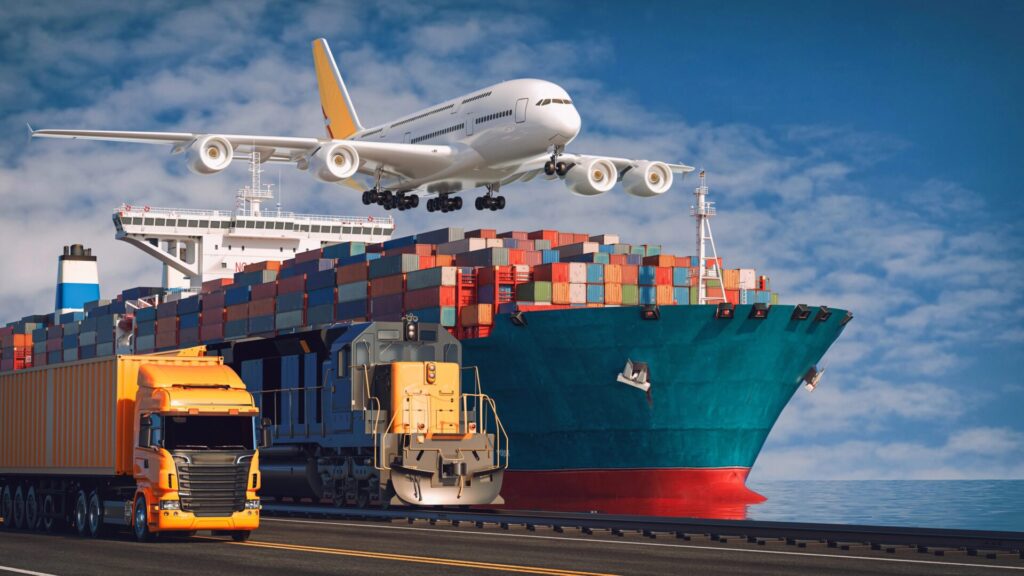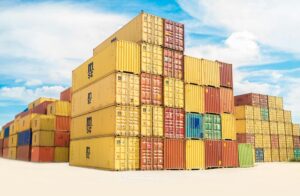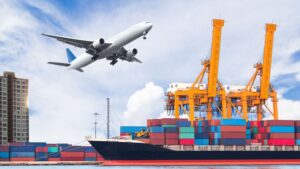For businesses and individuals alike, navigating the complexities of international shipping can feel overwhelming. When it comes to the cost of shipping from China to the USA, a multitude of factors come into play, making it difficult to predict a definitive price upfront. This comprehensive guide unravels the mysteries surrounding China-US shipping costs, equipping you with the knowledge to make informed decisions and optimize your logistics strategy.
Factors that Affect the Cost of Shipping from China to the USA

Understanding the variables that influence shipping costs empowers you to make strategic choices and potentially reduce expenses. Here’s a breakdown of the key considerations:
- Shipment Weight and Dimensions: Generally, shipping costs rise proportionally with weight. However, dimensional weight often comes into play, particularly for lightweight, bulky items. Carriers calculate dimensional weight by multiplying the package’s length, width, and height and comparing it to the actual weight. The higher of the two values determines the final shipping cost.
- Shipping Method: The chosen shipping method significantly impacts the cost and delivery timeframe. Here’s a quick comparison of the three main options:
- Air Freight: The fastest but most expensive option, ideal for urgent deliveries or time-sensitive products.
- Ocean Freight: The most cost-effective method for large shipments, but expect longer delivery times (typically 30-45 days).
- Consolidated Cargo (LCL): A cost-saving option for smaller shipments that share container space with other businesses’ cargo.
- Origin and Destination: The specific origin city in China and the final destination in the USA can influence the cost. Locations further inland from major ports may incur additional transportation fees.
- Incoterms: These international commercial terms define the responsibilities of buyers and sellers in a shipment. Understanding Incoterms like FOB (Free on Board) or CIF (Cost, Insurance, and Freight) is crucial, as they determine who bears the cost of transportation and insurance at various stages of the journey.
- Customs Duties and Taxes: Be prepared for potential import duties and taxes levied by US customs authorities upon arrival. These fees depend on the product type, value, and origin country. Research duty rates beforehand to avoid surprises.
- Additional Fees and Charges: Be mindful of potential surcharges like fuel adjustments, peak season fees, and documentation costs that may be added to the base shipping rate.
Understanding Shipping Terms and Incoterms

Fluency in common shipping terminology empowers you to navigate the complexities of China-US shipping with greater ease. Here are some essential terms to know:
- Freight Forwarder: A logistics company that manages the entire shipping process, including customs clearance and documentation.
- Bill of Lading (BOL): A vital document that serves as a receipt for the cargo and a contract of carriage between the shipper and carrier.
- Container: A standardized metal box used for transporting goods by sea or rail. Common sizes include 20-foot and 40-foot containers.
- Free on Board (FOB): Incoterm where the seller’s responsibility ends once the goods are loaded onto the ship at the origin port. The buyer assumes all risks and costs from that point onwards.
- Cost, Insurance, and Freight (CIF): Incoterm where the seller covers the cost of transporting the goods to the destination port, including insurance. The buyer is responsible for unloading and any customs duties upon arrival.
Calculating the Weight and Dimensions of Your Shipment
Accurate measurement of your shipment’s weight and dimensions is crucial for obtaining accurate shipping quotes. Here’s how to ensure proper calculation:
- Weigh your shipment: Use a calibrated scale to determine the actual weight of your packed goods.
- Measure your package: Accurately measure the length, width, and height of your box in centimeters.
Pro Tip: When packing, consider using void fill materials like packing peanuts or air pillows to minimize dead space and reduce dimensional weight.
Choosing the Right Shipping Method – Air, Sea, or Rail

The optimal shipping method hinges on your specific needs and priorities. Consider the following factors when making your choice:
- Delivery Speed: If time is of the essence, air freight is the clear winner, albeit at a higher cost. For less urgent shipments, sea freight offers significant cost savings.
- Shipment Size and Weight: Large or heavy shipments are often best suited for ocean freight due to cost-effectiveness. Smaller packages can benefit from air freight or potentially even expedited services.
- Budget: Sea freight reigns supreme for budget-conscious shipments. Air freight comes at a premium, while consolidated cargo (LCL) offers a middle ground.
Customs Duties and Taxes
Be prepared for potential import duties and taxes levied by US customs authorities.
Researching Duty Rates and Minimizing Customs Hassles
To proactively manage customs costs and avoid delays, here are some key steps:
- Identify your Harmonized System (HS) code: This internationally standardized code classifies traded goods and determines applicable duty rates. You can find the HS code for your product through various resources, including customs websites or consulting a freight forwarder.
- Utilize duty calculators: Many online tools and freight forwarder websites offer duty calculators that estimate potential import duties and taxes based on the HS code, value, and origin of your goods.
- Work with a customs broker: A customs broker is a licensed professional who can navigate the complexities of customs clearance, ensuring proper documentation and classification to minimize delays and potential penalties.
Additional Fees and Charges: Understanding the Bill
When comparing quotes from freight forwarders or carriers, ensure you understand the full scope of charges included in the final price. Here are some common additional fees to be aware of:
- Fuel Surcharges: Fluctuations in global oil prices can lead to fuel surcharges being applied to the base shipping rate.
- Peak Season Surcharges: During peak shipping periods, like holidays or Chinese New Year, expect potential surcharges to accommodate increased demand.
- Inland Transportation: Costs associated with transporting your shipment from the origin warehouse to the port or vice versa may be added.
- Documentation Fees: Charges for processing paperwork like bills of lading, commercial invoices, and certificates of origin may apply.
Comparing Shipping Rates and Negotiating with Freight Forwarders

Once you have a grasp of the factors influencing shipping costs and potential additional fees, it’s time to compare quotes from reputable freight forwarders. Here are some tips for securing the best possible deal:
- Obtain quotes from multiple freight forwarders: Don’t settle for the first quote you receive. Get quotes from several providers to compare pricing and service offerings.
- Clearly communicate your needs: Provide detailed information about your shipment, including weight, dimensions, origin, destination, and desired delivery timeframe. The more information you provide, the more accurate the quotes will be.
- Negotiate rates: Freight forwarders often have some flexibility in pricing, especially for larger shipments. Don’t be afraid to negotiate for a competitive rate based on your research and quotes from other providers.
Tracking Your Shipment and Managing Logistics
Peace of mind comes with knowing the whereabouts of your shipment. Most freight forwarders offer online tracking tools that allow you to monitor your shipment’s progress in real-time. Here are some additional tips for effective logistics management:
- Maintain clear communication: Maintain open communication with your freight forwarder throughout the shipping process. Ask questions, address any concerns promptly, and stay updated on the status of your shipment.
- Plan for potential delays: Unexpected delays can occur due to various factors like customs clearance issues or bad weather. Building buffer time into your delivery expectations can help mitigate disruptions.
- Leverage technology: Many logistics providers offer online portals or mobile apps that provide shipment tracking, document management, and other valuable tools to streamline your experience.
Tips for Reducing Shipping Costs from China to the USA
While complete cost elimination may not be possible, here are some strategies to potentially reduce your China-US shipping expenses:
cost of shipping from china to usa
- Consolidate shipments: If you regularly import goods from China, consider consolidating smaller shipments into larger ones to take advantage of economies of scale and potentially lower costs per unit.
- Optimize packaging: Utilize space-saving packaging techniques to minimize your shipment’s dimensional weight. This can significantly reduce costs, especially for air freight.
- Negotiate Incoterms: Depending on your negotiation power with your supplier, you may be able to negotiate Incoterms that shift some of the transportation and insurance responsibilities to them, potentially reducing your costs.
- Plan ahead: Booking your shipment in advance, particularly during peak seasons, can sometimes help you secure better rates from freight forwarders.





